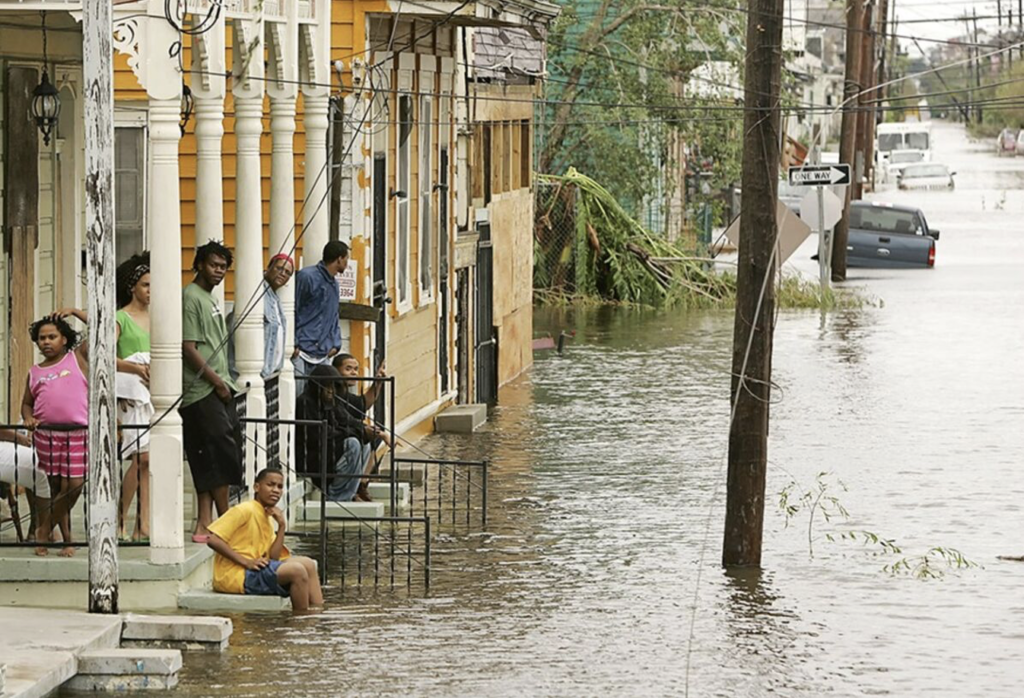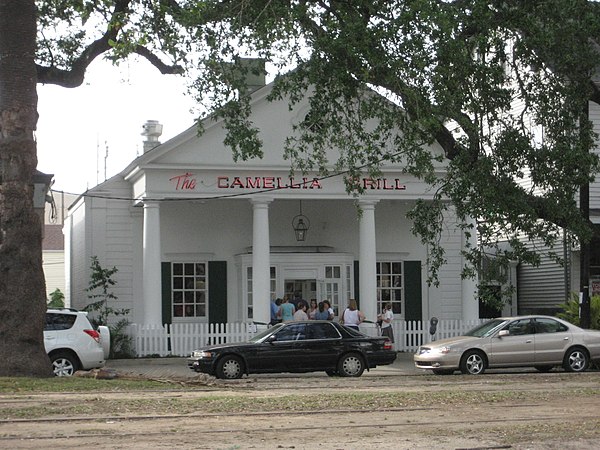Gainsley Korengold
New Orleans is often hailed as the soul of America, celebrated for its distinctive art and culture. The individuals born and raised in New Orleans share an intrinsic connection to its people, places, and traditions. However, the devastating impact of Hurricane Katrina in 2005 left much of the city, particularly in predominantly African American communities, in ruins. The question lingers: can the practice of place and the deep-rooted connection to the city ever be fully restored?
Hurricane Katrina disproportionately affected black homeowners in New Orleans, with more than three times the likelihood of flooding compared to their white counterparts. This deliberate and political outcome stemmed from racially discriminatory housing practices and city planning. Despite extensive efforts to rebuild and reconcile with the pain inflicted on the city, we must question for whom the city is undergoing reconstruction.

A family sits on their porch in the Treme area of New Orleans, known to be one of the oldest African American neighborhoods in America. (Bloomberg)
When Hurricane Katrina hit, the flooding disproportionately harmed black neighborhoods, exacerbating racial and social inequality. Pre-Katrina, African American culture thrived. Now, 96,000 fewer African Americans are living in New Orleans, than prior to Hurricane Katrina. Nearly 1 in 3 black residents have not returned to the city.
Having personally experienced Hurricane Katrina’s impact, I relocated from New Orleans to New York, and my parents lived in New Orleans for ten years prior. Our evacuation entailed losses and a prolonged sense of displacement. But, 18 years later, when we visit the area I was born, it looks familiar and comparable to how we left it. This is because parts of the city have been rebuilt to closely resemble pre-Katrina New Orleans, including Uptown and the Garden District, close to where I used to live. And, these are the areas that were least effected by the storm in the first place. It’s no surprise that the recovered areas are predominantly white.

Image of Camellia Grill (Wikipedia), which opened in 1946, closed during the storm, and reopened again afterwards. A staple for both locals and tourists alike, Camellia Grill serves as a gathering place that brings together people from all areas of the city. In my opinion, Camellia Grill serves as one of the few pre and post-Katrina cultural landmarks that has been able to maintain its place in the city.
In speaking with my father, Michael Korengold, he described New Orleanian culture as “a caricature of what is once was,” a false display set up for tourists to experience pre-Katrina culture. When discussing the rebuilding of the city after the storm, he said, “Once Katrina hit, you had a lot of people coming from different organizations to help with the rebuild, and a lot of those people chose to stay. Those people brought with them no cultural background from New Orleans’ history, and many of the people that were responsible for the traditions were gone. This leaves you with many people who adopted their best estimation of New Orleanian culture. There were those who were grateful for the help in rebuilding the city and for choosing to live there during a difficult time. But the flip side is that many of those people were outsiders and unlikely to ever change their outsider status.”
The focus needs to shift to the underlying question of who is truly benefiting from the city’s reconstruction. In areas like the Seventh Ward, a predominantly black working-class community, the recovery is far from complete, and the practice of place remains incomplete for many black Americans. The essence of New Orleans lies in its people and their connection to the city. Once this connection is severed, the heart and soul of New Orleans are compromised, breeding resentment, and depleting the city of its unique culture.
Now, what used to be authentic New Orleanian culture has turned into a point of money-making to bring in tourists, to the point where New Orleans natives feel as though they’re performing their culture for outsiders, rather than living it for themselves like they used to.
The ongoing challenge is whether New Orleans can fully reclaim its unique cultural explosion across the entire city. While certain areas, like the French Quarter, may offer a semblance of New Orleanian culture for tourists, full restoration of the city’s practice of place is critical to resurrecting pre-Katrina New Orleans. Until this overarching recovery is achieved, the city will remain an imitation of its former self, lacking the genuine spirit of the people that define its cultural richness.
https://www.urban.org/research/publication/rebuilding-cultural-vitality-new-orleans
https://www.newyorker.com/books/under-review/why-hurricane-katrina-was-not-a-natural-disaster
